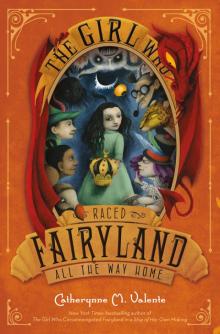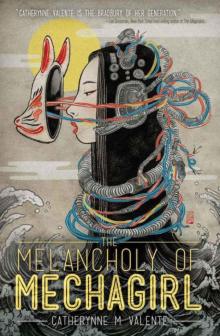


How Democracies Die, Page 3
Steven Levitsky
Table 1: Four Key Indicators of Authoritarian Behavior
1. Rejection of (or weak commitment to) democratic rules of the game
Do they reject the Constitution or express a willingness to violate it?
Do they suggest a need for antidemocratic measures, such as canceling elections, violating or suspending the Constitution, banning certain organizations, or restricting basic civil or political rights?
Do they seek to use (or endorse the use of) extraconstitutional means to change the government, such as military coups, violent insurrections, or mass protests aimed at forcing a change in the government?
Do they attempt to undermine the legitimacy of elections, for example, by refusing to accept credible electoral results?
2. Denial of the legitimacy of political opponents
Do they describe their rivals as subversive, or opposed to the existing constitutional order?
Do they claim that their rivals constitute an existential threat, either to national security or to the prevailing way of life?
Do they baselessly describe their partisan rivals as criminals, whose supposed violation of the law (or potential to do so) disqualifies them from full participation in the political arena?
Do they baselessly suggest that their rivals are foreign agents, in that they are secretly working in alliance with (or the employ of) a foreign government—usually an enemy one?
3. Toleration or encouragement of violence
Do they have any ties to armed gangs, paramilitary forces, militias, guerrillas, or other organizations that engage in illicit violence?
Have they or their partisan allies sponsored or encouraged mob attacks on opponents?
Have they tacitly endorsed violence by their supporters by refusing to unambiguously condemn it and punish it?
Have they praised (or refused to condemn) other significant acts of political violence, either in the past or elsewhere in the world?
4. Readiness to curtail civil liberties of opponents, including media
Have they supported laws or policies that restrict civil liberties, such as expanded libel or defamation laws, or laws restricting protest, criticism of the government, or certain civic or political organizations?
Have they threatened to take legal or other punitive action against critics in rival parties, civil society, or the media?
Have they praised repressive measures taken by other governments, either in the past or elsewhere in the world?
Keeping authoritarian politicians out of power is more easily said than done. Democracies, after all, are not supposed to ban parties or prohibit candidates from standing for election—and we do not advocate such measures. The responsibility for filtering out authoritarians lies, rather, with political parties and party leaders: democracy’s gatekeepers.
Successful gatekeeping requires that mainstream parties isolate and defeat extremist forces, a behavior political scientist Nancy Bermeo calls “distancing.” Prodemocratic parties may engage in distancing in several ways. First, they can keep would-be authoritarians off party ballots at election time. This requires that they resist the temptation to nominate these extremists for higher office even when they can potentially deliver votes.
Second, parties can root out extremists in the grass roots of their own ranks. Take the Swedish Conservative Party (AVF) during the perilous interwar period. The AVF’s youth group (an organization of voting-age activists), called the Swedish Nationalist Youth Organization, grew increasingly radical in the early 1930s, criticizing parliamentary democracy, openly supporting Hitler, and even creating a group of uniformed storm troopers. The AVF responded in 1933 by expelling the organization. The loss of 25,000 members may have cost the AVF votes in the 1934 municipal elections, but the party’s distancing strategy reduced the influence of antidemocratic forces in Sweden’s largest center-right party.
Third, prodemocratic parties can avoid all alliances with antidemocratic parties and candidates. As we saw in Italy and Germany, prodemocratic parties are sometimes tempted to align with extremists on their ideological flank to win votes or, in parliamentary systems, form governments. But such alliances can have devastating long-term consequences. As Linz wrote, the demise of many democracies can be traced to a party’s “greater affinity for extremists on its side of the political spectrum than for [mainstream] parties close to the opposite side.”
Fourth, prodemocratic parties can act to systematically isolate, rather than legitimize, extremists. This requires that politicians avoid acts—such as German Conservatives’ joint rallies with Hitler in the early 1930s or Caldera’s speech sympathizing with Chávez—that help to “normalize” or provide public respectability to authoritarian figures.
Finally, whenever extremists emerge as serious electoral contenders, mainstream parties must forge a united front to defeat them. To quote Linz, they must be willing to “join with opponents ideologically distant but committed to the survival of the democratic political order.” In normal circumstances, this is almost unimaginable. Picture Senator Edward Kennedy and other liberal Democrats campaigning for Ronald Reagan, or the British Labour Party and their trade union allies endorsing Margaret Thatcher. Each party’s followers would be infuriated at this seeming betrayal of principles. But in extraordinary times, courageous party leadership means putting democracy and country before party and articulating to voters what is at stake. When a party or politician that tests positive on our litmus test emerges as a serious electoral threat, there is little alternative. United democratic fronts can prevent extremists from winning power, which can mean saving a democracy.
—
Although the failures are more memorable, some European democracies practiced successful gatekeeping between the wars. Surprisingly big lessons can be drawn from small countries. Consider Belgium and Finland. In Europe’s years of political and economic crisis in the 1920s and 1930s, both countries experienced an early warning sign of democratic decay—the rise of antisystem extremists—but, unlike Italy and Germany, they were saved by political elites who defended democratic institutions (at least until Nazi invasion several years later).
During Belgium’s 1936 general election, as the contagion of fascism was spreading from Italy and Germany across Europe, voters delivered a jarring result. Two authoritarian far-right parties—the Rex Party and the Flemish nationalist party, or Vlaams Nationaal Verbond (VNV)—surged in the polls, capturing almost 20 percent of the popular vote and challenging the historical dominance of three establishment parties: the center-right Catholic Party, the Socialists, and the Liberal Party. The challenge from the leader of the Rex Party, Léon Degrelle, a Catholic journalist who would become a Nazi collaborator, was especially strong. Degrelle, a virulent critic of parliamentary democracy, had departed from the right edges of the Catholic Party and now attacked its leaders as corrupt. He received encouragement and financial support from both Hitler and Mussolini.
The 1936 election shook the centrist parties, which suffered losses across the board. Aware of the antidemocratic movements in nearby Italy and Germany and fearful for their own survival, they confronted the daunting task of deciding how to respond. The Catholic Party, in particular, faced a difficult dilemma: collaborate with their longtime rivals, the Socialists and Liberals, or forge a right-wing alliance that included the Rexists, a party with whom they shared some ideological affinity but that rejected the value of democratic politics.
Unlike the retreating mainstream politicians of Italy and Germany, the Belgian Catholic leadership declared that any cooperation with the Rexists was incompatible with party membership and then pursued a two-pronged strategy to combat the movement. Internally, Catholic Party leaders heightened discipline by screening candidates for pro-Rexist sympathies and expelling those who expressed extremist views. In addition, the party leadership took a strong stance against cooperation with the far right. Externally, the Catholic Party fought Rex on its own turf. The Catholic Party adopted new propaganda and campaign tacti
cs that targeted younger Catholics, who had formerly been part of the Rexist base. They created the Catholic Youth Front in December 1935 and began to run former allies against Degrelle.
The final clash between Rex and the Catholic Party, in which Rex was effectively sidelined (until the Nazi occupation), centered around the formation of a new government after the 1936 election. The Catholic Party supported the incumbent Catholic prime minister Paul van Zeeland. After van Zeeland regained the premiership, there were two chief options for forming a government: The first was an alliance with the rival Socialists, along the lines of France’s “Popular Front,” which van Zeeland and other Catholic leaders had initially hoped to avoid. The second was a right-wing alliance of antisocialist forces that would include Rex and VNV. The choice was not easy; the second option was supported by a traditionalist faction that sought to upset the fragile van Zeeland cabinet by rallying the Catholic rank and file, organizing a “March on Brussels,” and forcing a by-election in which Rex leader Degrelle would run against van Zeeland. These plans were thwarted in 1937 when Degrelle lost the by-election, largely because the Catholic Party MPs had taken a stand: They refused to go with the traditionalists’ plan and instead united with the Liberals and Socialists behind van Zeeland. This was the Catholic Party’s most important gatekeeping act.
The Catholic Party’s stand on the right was also made possible by King Leopold III and the Socialist Party. The election of 1936 had left the Socialist Party as the largest party in the legislature, which gave it the prerogative to form a government. However, when it became evident that the Socialists could not gain enough parliamentary support, rather than call a new election—which may have handed even more seats to extremist parties—the king met with leaders of the largest parties to talk them into a power-sharing cabinet, led by incumbent prime minister van Zeeland, which would include both the conservative Catholics and the Socialists but exclude antisystem parties on both sides. Although the Socialists distrusted van Zeeland, a Catholic Party man, they nevertheless put democracy ahead of their own interests and endorsed the grand coalition.
A similar dynamic unfolded in Finland, where the extreme-right Lapua Movement burst onto the political stage in 1929, threatening the country’s fragile democracy. The movement sought the destruction of communism by any means necessary. It threatened violence if its demands were not met and attacked mainstream politicians whom it deemed collaborators with Socialists. At first, politicians from the governing center-right Agrarian Union flirted with the Lapua Movement, finding its anticommunism politically useful; they met the movement’s demands to deny communist political rights while tolerating extreme-right violence. In 1930, P. E. Svinhufvud, a conservative whom the Lapua leaders considered “one of their own,” became prime minister, and he offered them two cabinet posts. A year later, Svinhufvud became president. Yet the Lapua Movement continued its extremist behavior; with the communists banned, it targeted the more moderate Social Democratic Party. Lapua thugs abducted more than a thousand Social Democrats, including union leaders and members of parliament. The Lapua Movement also organized a 12,000-person march on Helsinki (modeled on the mythical March on Rome), and in 1932, it backed a failed putsch aimed at replacing the government with one that was “apolitical” and “patriotic.”
As the Lapua Movement grew more radical, however, Finland’s traditional conservative parties broke decisively with it. In late 1930, the bulk of the Agrarian Union, the liberal Progress Party, and much of the Swedish Peoples Party joined their main ideological rival, the Social Democrats, in the so-called Lawfulness Front to defend democracy against violent extremists. Even the conservative president, Svinhufvud, forcefully rejected—and eventually banned—his former allies. The Lapua Movement was left isolated, and Finland’s brief burst of fascism was aborted.
It is not only in distant historical cases that one finds successful gatekeeping. In Austria in 2016, the main center-right party (the Austrian People’s Party, ÖVP) effectively kept the radical-right Freedom Party (FPÖ) out of the presidency. Austria has a long history of extreme right politics, and the FPÖ is one of Europe’s strongest far-right parties. Austria’s political system was growing vulnerable because the two main parties, the Social Democratic SPÖ and the Christian Democratic ÖVP, which had alternated in the presidency throughout the postwar period, were weakening. In 2016, their dominance was challenged by two upstarts—the Green Party’s former chairman, Alexander Van der Bellen, and the extremist FPÖ leader Norbert Hofer.
To the surprise of most analysts, the first round left Van der Bellen and the right-wing outsider Hofer as the two candidates in a second-round runoff. After a procedural error in October 2016, the runoff was held in December. At this point, several leading politicians, including some from the conservative ÖVP, argued that Hofer and his Freedom Party had to be defeated. Hofer had appeared to encourage violence against immigrants, and many questioned whether an elected Hofer would privilege his party in ways that violated long-standing norms of the president remaining above politics. In the face of this threat, some important ÖVP leaders worked to defeat Hofer by supporting their ideological rival, the left-leaning Green candidate, Van der Bellen. The ÖVP’s presidential candidate, Andreas Khol, endorsed Van der Bellen, as did Chairman Reinhold Mitterlehner, Cabinet Minister Sophie Karmasin, and dozens of ÖVP mayors in the Austrian countryside. In one letter, former chairman Erhard Busek wrote that he endorsed Van der Bellen “not with passion but after careful deliberation,” and that, furthermore, the decision was motivated by the sentiment that “we don’t want congratulations from Le Pen, Jobbik, Wilders and the AfD [and other extremists] after our presidential elections.” Van der Bellen won by a mere 300,000 votes.
This stance took considerable political courage. According to one Catholic Party mayor of a small city outside Vienna, Stefan Schmuckenschlager, who endorsed the Green Party candidate, it was a decision that split families. His twin brother, another party leader, had supported Hofer. As Schmuckenschlager explained it, power politics sometimes has to be put aside to do the right thing.
Did the endorsements from the ÖVP help? There is evidence that they did. According to exit polls, 55 percent of respondents who identified as ÖVP supporters said they voted for Van der Bellen, and 48 percent of Van der Bellen voters said they had voted for him to prevent Hofer from winning. In addition, the strong urban/rural division that has always marked Austrian politics (between left-wing urban areas and right-wing rural areas) was dramatically diminished in the second round in December 2016, with a surprising number of traditional rural conservative states switching to vote for Van der Bellen.
In short, in 2016, responsible leaders in the ÖVP resisted the temptation to ally with an extremist party on their own ideological flank, and the result was that party’s defeat. The FPÖ’s strong performance in the 2017 parliamentary elections, which positioned it to become a junior partner in a new right-wing government, made it clear that the dilemma facing Austrian conservatives persists. Still, their effort to keep an extremist out of the presidency provides a useful model of contemporary gatekeeping.
For its part, the United States has an impressive record of gatekeeping. Both Democrats and Republicans have confronted extremist figures on their fringes, some of whom enjoyed considerable public support. For decades, both parties succeeded in keeping these figures out of the mainstream. Until, of course, 2016.
2
Gatekeeping in America
In The Plot Against America, American novelist Philip Roth builds on real historical events to imagine what fascism might have looked like in prewar America.
An early American mass-media hero, Charles Lindbergh, is the novel’s central figure: He skyrockets to fame with his 1927 solo flight across the Atlantic and later becomes a vocal isolationist and Nazi sympathizer. But here is where history takes a fantastic turn in Roth’s hands: Rather than fading into obscurity, Lindbergh arrives by plane at the 1940 Republican Party convention in Philad
elphia at 3:14 A.M., as a packed hall finds itself deadlocked on the twentieth ballot. Cries of “Lindy! Lindy! Lindy!” erupt for thirty uncontained minutes on the convention floor, and in a moment of intense collective fervor, his name is proposed, seconded, and approved by acclamation as the party’s nominee for president. Lindbergh, a man with no political experience but unparalleled media savvy, ignores the advice of his advisors and campaigns by piloting his iconic solo aircraft, Spirit of St. Louis, from state to state, wearing his flight goggles, high boots, and jumpsuit.
In this world turned upside down, Lindbergh beats Franklin Delano Roosevelt, the incumbent, to become president. And Lindbergh, whose campaign is later revealed to be linked to Hitler, goes on to sign peace treaties with America’s enemies. A wave of anti-Semitism and violence is unleashed across America.
Many Americans have found parallels between the 2016 presidential election and Roth’s work of fiction. The premise—an outsider with dubious democratic credentials comes to power with the aid of a foreign nation—cannot help but resonate. But the comparison raises another striking question: Given the severity of the economic crisis in 1930s America, why didn’t this happen here?














